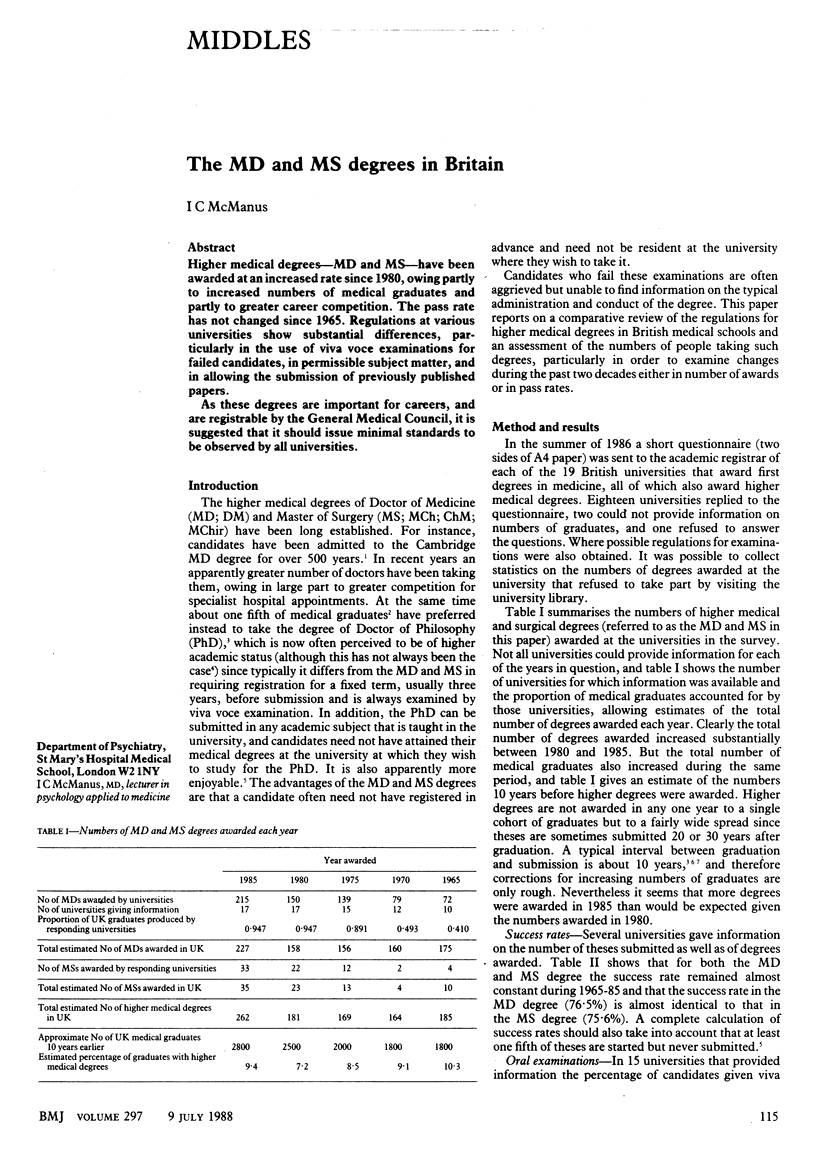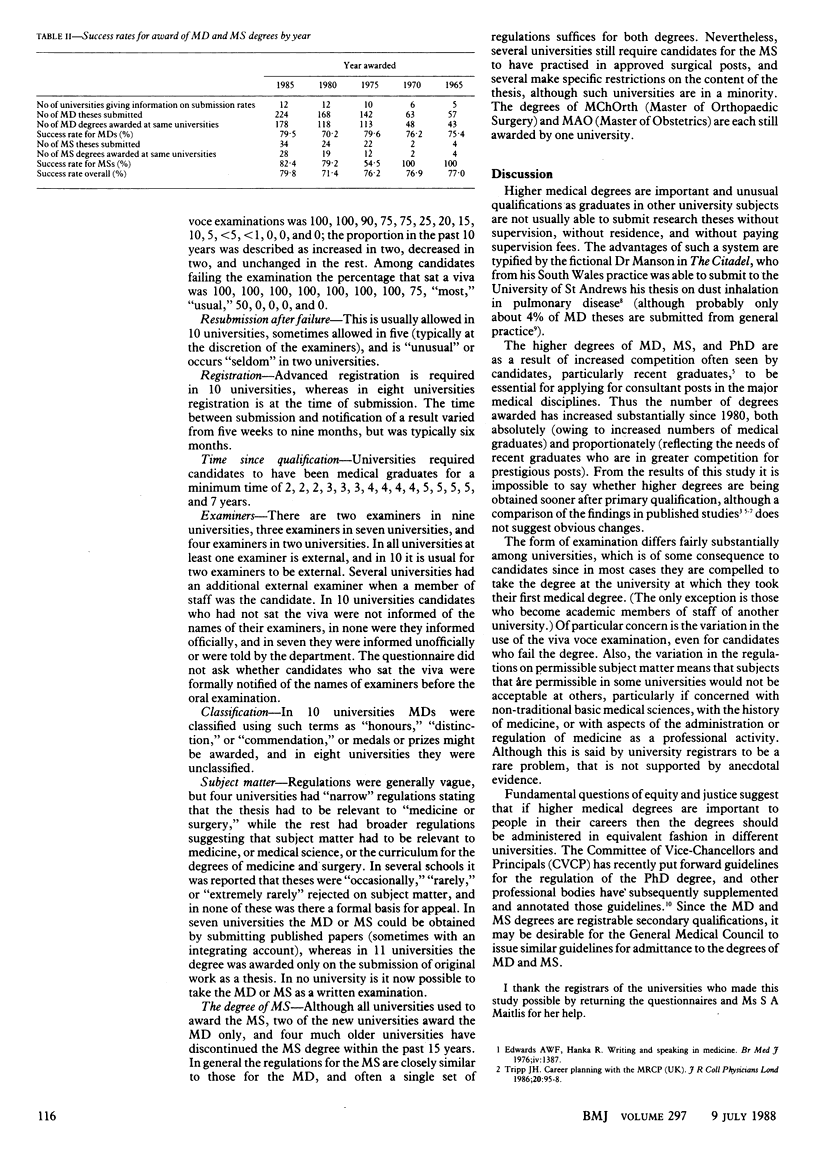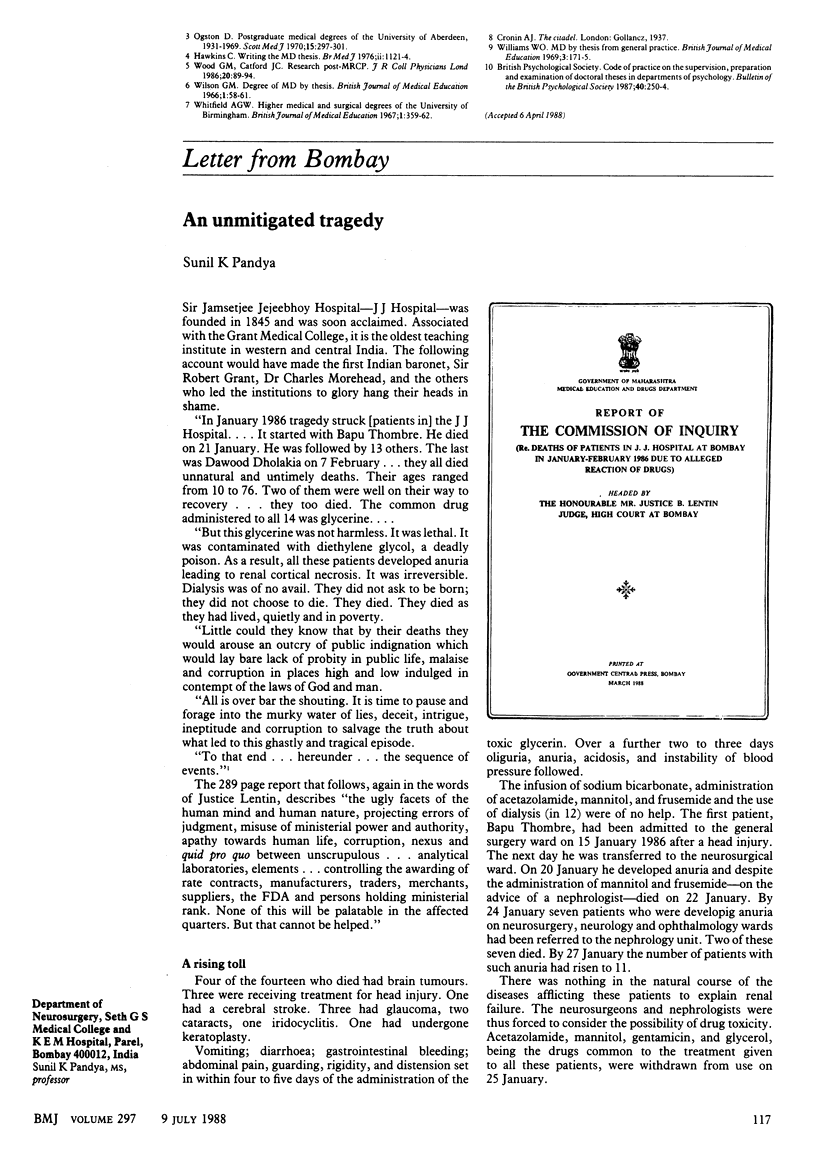Abstract
Higher medical degrees--MD and MS--have been awarded at an increased rate since 1980, owing partly to increased numbers of medical graduates and partly to greater career competition. The pass rate has not changed since 1965. Regulations at various universities show substantial differences, particularly in the use of viva voce examinations for failed candidates, in permissible subject matter, and in allowing the submission of previously published papers. As these degrees are important for careers, and are registrable by the General Medical Council, it is suggested that it should issue minimal standards to be observed by all universities.
Full text
PDF


Selected References
These references are in PubMed. This may not be the complete list of references from this article.
- Ogston D. Postgraduate medical degrees of the University of Aberdeen, 1931-69. Scott Med J. 1970 Aug;15(8):297–301. doi: 10.1177/003693307001500805. [DOI] [PubMed] [Google Scholar]
- Whitfield A. G. Higher medical and surgical degrees of the University of Birmingham. Br J Med Educ. 1967 Dec;1(5):359–362. doi: 10.1111/j.1365-2923.1967.tb01733.x. [DOI] [PubMed] [Google Scholar]
- Williams W. O. MD by thesis from general practice. Br J Med Educ. 1969 Sep;3(3):171–175. doi: 10.1111/j.1365-2923.1969.tb02077.x. [DOI] [PubMed] [Google Scholar]
- Wilson G. M. Degree of MD by thesis. Br J Med Educ. 1966 Dec;1(1):58–61. doi: 10.1111/j.1365-2923.1966.tb02069.x. [DOI] [PubMed] [Google Scholar]


